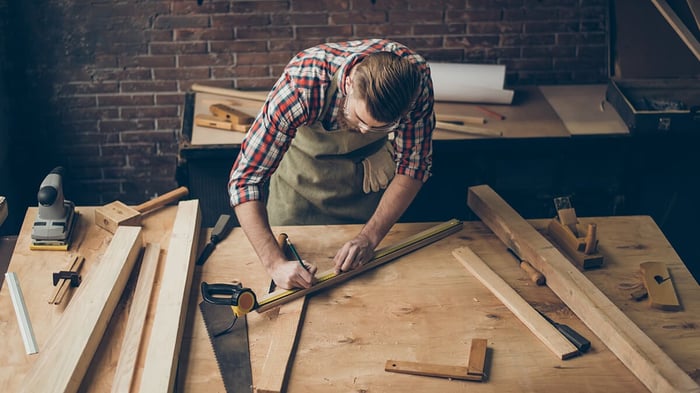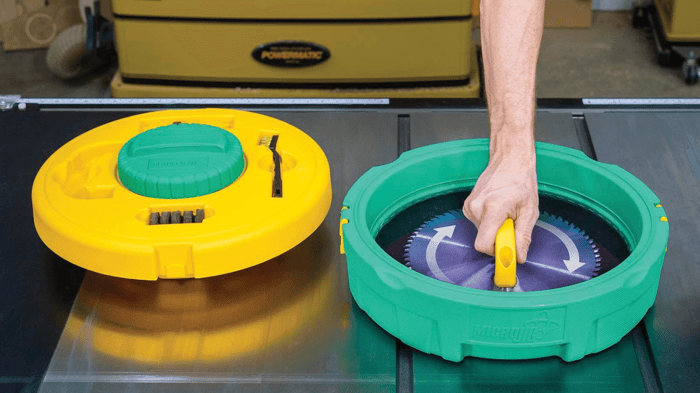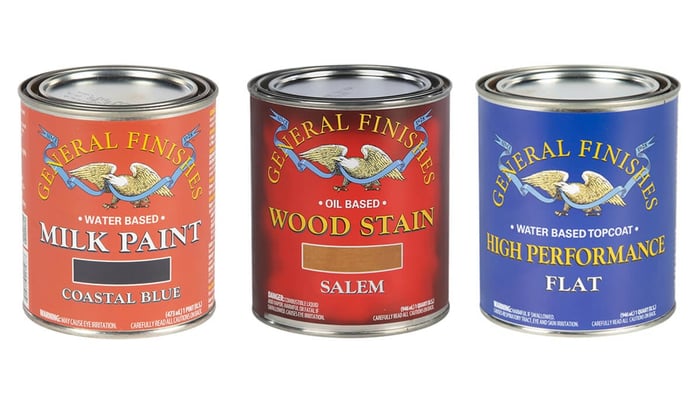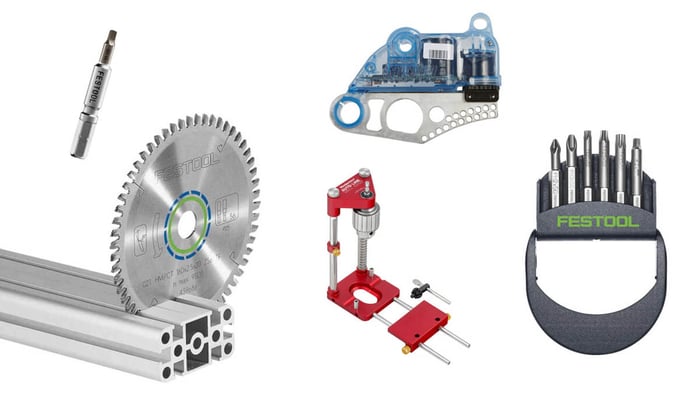
Essential Measuring Tools for Woodworkers
In woodworking, precision is paramount, and having the right measuring tools at your disposal can make all the difference. Whether you're a seasoned carpenter or a DIY enthusiast venturing into the realm of woodcraft, understanding the essential woodworking measuring tools is crucial for achieving flawless results. From the classic tape measure to the precision of calipers, this guide will delve into the indispensable instruments that every woodworker should have in their arsenal. Discover how to enhance your woodworking projects with accuracy and efficiency, ensuring every cut, join, and finish is executed with masterful precision.
Basic Measuring Tools for Woodworkers
Woodworking requires accurate measuring tools. Essential tools include a tape measure and ruler for basic measurements, squares (try square and combination square) for checking angles, and marking tools (gauges and pencils) for precise cuts and joins. These tools are crucial for quality woodworking.

Tape Measures
- Purpose: For measuring lengths and distances in woodworking projects, tape measures are versatile and essential.
- Buying Tips: Look for a tape measure with both imperial and metric measurements, a sturdy locking mechanism, and a durable, easily readable tape.

Rulers and Squares
- Purpose: Used for measuring short distances and ensuring perfect angles and straight edges.
- Buying Tips: Opt for stainless steel rulers for durability and clear marking. For squares, ensure they offer precise angles and are made of high-quality materials that won't wear down over time.
Combination Squares
- Purpose: A versatile tool for measuring angles, depths, and distances. It combines the functionality of several tools, including a ruler, spirit level, and scriber.
- Buying Tips: Ensure the combination square has a durable body and blade, accurate markings, and a secure locking mechanism. Look for a model that allows easy blade replacement.
Calipers and Dividers
- Purpose: Calipers measure the thickness or diameter of materials, while dividers are used for transferring measurements and scribing circles or arcs.
- Buying Tips: For calipers, digital models offer precise readings and ease of use. For dividers, look for adjustable points and a comfortable grip.
Protractors and Bevel Gauges
- Purpose: Used for measuring and laying out angles. Bevel gauges help transfer angles onto your workpiece.
- Buying Tips: Seek out protractors with clear, accurate scales. For bevel gauges, durability and an easily adjustable blade are key features.
Marking Gauges
- Purpose: Essential for marking parallel lines and maintaining uniformity in joinery.
- Buying Tips: Look for marking gauges with hardened steel or brass rods for durability, and ensure the adjustment mechanism is smooth and precise.

Height Gauges and Depth Gauges
- Purpose: Height gauges are used for setting and measuring the height of saw blades and router bits, while depth gauges measure the depth of slots, holes, or recesses.
- Buying Tips: Precision is paramount. Opt for gauges that offer fine adjustment capabilities and are made from durable materials.

Digital Measuring Tools
- Purpose: Offer precise measurements quickly and can include digital calipers, angle finders, and depth gauges.
- Buying Tips: Ensure the tool has a clear, easy-to-read display, long battery life, and is made from robust materials to withstand the workshop environment.
Tips for Accurate Measurements
- Use Quality Tools: Invest in high-quality measuring tools. Higher-quality tools tend to offer greater accuracy and durability, which is crucial for precise measurements.
- Consistent Measuring Tools: Stick to using the same measuring tool for a project to avoid inconsistencies that can arise from slight variations between different tools.
- Measure Twice, Cut Once: This age-old adage remains one of the most important pieces of advice. Double-check your measurements before making any cuts to minimize mistakes.
- Zero Your Tools: For digital measuring tools, always ensure they are zeroed out before use. For analog tools like rulers and tape measures, make sure the end is not bent or worn, as this can lead to inaccuracies.
- Understand Tolerance: Know the tolerance level of your project and measure accordingly. Some projects may allow for a slight margin of error, while others, like cabinetry, require exact precision.
- Mark Clearly: Use a sharp pencil or marking knife for the most precise marks. The finer the mark, the more accurate your measurement will be.
- Use a Stop Block: When making multiple cuts of the same length, a stop block can ensure each piece is uniform without having to measure each time.
- Check for Square: Regularly check that your squares are truly 90 degrees. Even a slight deviation can lead to significant errors in your project.
- Maintain Your Tools: Keep your measuring tools in good condition. Clean and store them properly to prevent damage that could affect accuracy.
- Calibrate Tools Regularly: For tools that require calibration, such as digital calipers or saws, make sure they are calibrated frequently to ensure their readings are accurate.
- Understand Wood Movement: Wood expands and contracts with changes in humidity. Account for this movement in your measurements and project design.
- Practice and Patience: Lastly, accuracy often comes down to practice and patience. Take your time with measurements and cuts to ensure the highest level of precision.
By following these tips, you can greatly enhance the accuracy of your measurements, leading to more successful and satisfying woodworking projects.
Understanding and Minimizing Measurement Errors
By incorporating these strategies into your woodworking practices, you can significantly reduce measurement errors, leading to better overall project outcomes and a more satisfying crafting experience.
Understand Common Sources of Error
- Tool Precision: Recognize the limitations of your measuring tools. Even high-quality tools have a margin of error.
- Human Error: Mistakes in reading measurements, marking, or setting up cuts can introduce errors. Double-check your work.
- Environmental Factors: Temperature and humidity can affect both your wood materials and measuring tools. Wood expands and contracts with humidity changes, which can impact measurements.
Strategies to Minimize Errors
- Standardize Your Tools: Using different tools for measuring can introduce variability. Stick to one tape measure or ruler for the entirety of a project.
- Calibrate and Maintain Tools: Regularly check your tools for accuracy and calibration, especially if they fall or are used frequently.
- Use Reference Edges: Whenever possible, measure from the same edge of the material to reduce cumulative errors.
- Marking Techniques: Use sharp pencils or marking knives for clear, precise lines. A thick marker line can introduce variability.
- Repeat Measurements: Take multiple measurements to ensure consistency, especially when cutting multiple pieces to the same size.
- Understand Your Tools: Familiarize yourself with the specific features and idiosyncrasies of your tools. For example, some tape measures have a slight play in the hook end for inside and outside measurements; understanding how to use this feature can improve accuracy.
- Use Jigs and Stops: For repetitive cuts, use jigs or stops with your saws to ensure each piece is identical without remeasuring.
- Check Angles with a Known Square: Regularly verify the accuracy of your squares and angles with a trusted square, especially before layout work.
- Digital Tools: Consider using digital measuring tools for critical measurements, as they can offer greater precision and are often easier to read accurately.
- Practice and Experience: Over time, you’ll develop a sense for when measurements are likely to be off and how to adjust your techniques to improve accuracy.
Final Thoughts
- Continuous Learning: Woodworking is a skill where learning never stops. Be open to learning from mistakes and continuously seek ways to improve your measuring and marking methods.
- Patience is Key: Rushing through measurements can lead to errors. Take your time, especially on critical components of your project.
- Document Your Process: Keeping a record of measurements and techniques for projects can help you identify when and where errors tend to occur, providing insights for improvement.
Frequently Asked Questions
1. What is the most accurate measuring tool for woodworking?
Answer: The most accurate measuring tool can vary depending on the specific measurement task. For general lengths, a high-quality tape measure or a precision ruler can be very accurate. For finer measurements, such as thicknesses or diameters, digital calipers are highly accurate. The key is using the right tool for the job and ensuring it's well-maintained and correctly calibrated.
2. How do I choose the right size tape measure for my woodworking projects?
Answer: The right size tape measure depends on the scale of your projects. For most furniture projects, a 16-foot tape measure is sufficient. For larger projects or workshop layout tasks, a 25-foot or longer tape measure might be necessary. Look for a tape measure that is durable, has a readable scale, and includes both metric and imperial units if you work with diverse plans and materials.
3. Why are digital measuring tools considered more accurate?
Answer: Digital measuring tools, such as digital calipers or angle finders, offer high precision and the ability to read measurements directly, reducing the chance for human error in reading scales or dials. They often feature conversions between measurement units and can measure to fractions of a millimeter or thousandth of an inch.
4. Can I trust the accuracy of a speed square for all my projects?
Answer: A speed square is incredibly versatile and generally reliable for making quick marks and checks. However, for projects requiring very high precision, it's wise to double-check with a precision square or machinist's square. Ensure your speed square is of high quality and undamaged for the best accuracy.
5. How do I maintain my measuring tools to ensure their accuracy?
Answer: Regular maintenance is key. Store tools in a clean, dry place to prevent rust and corrosion. Clean them after use to remove any dust or debris. For tools like calipers, occasionally apply a small amount of light machine oil to keep them moving smoothly. Check for and recalibrate tools regularly according to the manufacturer's instructions.
6. What is the best way to measure angles accurately?
Answer: For measuring angles, a digital angle finder or a high-quality protractor can be very accurate. Bevel gauges are excellent for transferring specific angles from plans to workpieces. Regularly check the accuracy of these tools against a known right angle or using other calibration methods recommended by the manufacturer.
7. How important is it to have both metric and imperial measuring tools?
Answer: Having both metric and imperial measuring tools is essential if you work with plans or materials that use different measurement systems. Many tools now offer dual scales, which can save space in your workshop and make switching between systems seamless.
8. What's the difference between a marking gauge and a cutting gauge?
Answer: A marking gauge is used to scribe a line parallel to an edge, usually with a pin or a wheel. A cutting gauge is similar but features a knife edge instead of a pin, making it better suited for cutting through wood fibers, which is particularly useful on cross-grain lines.
9. How can I ensure my square is actually square?
Answer: To test a square, mark a line with it from one point on a piece of wood. Flip the square over and draw another line next to the first. If the lines are parallel, your square is true. If they diverge or converge, your square may be off and need adjustment or replacement.








